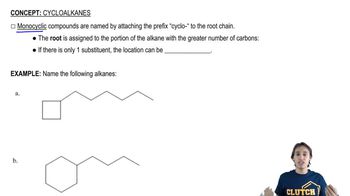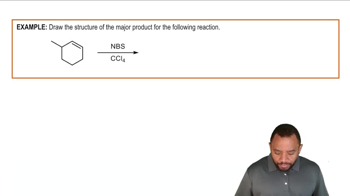How many of the following names are correct? Correct the incorrect names.
g. 2-ethyl-2-butene
h. (E)-2-methyl-1-hexene
i. 2-methylcyclopentene
 Verified step by step guidance
Verified step by step guidance Verified video answer for a similar problem:
Verified video answer for a similar problem:



 1:55m
1:55mMaster How to name alkenes and alkynes with a bite sized video explanation from Johnny
Start learning